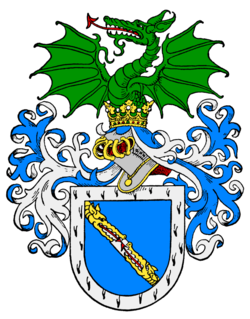
The House of Hoyos is a prominent Austrian noble family of an ancient Castilian origin, whose members held significant political positions during the Austro-Hungarian and the German Empire.

The House of Hoyos is a prominent Austrian noble family of an ancient Castilian origin, whose members held significant political positions during the Austro-Hungarian and the German Empire.
It derives its name from El Hoyo de Pinares in Ávila, Castile and León, and can be traced back to the 9th century. Juan de Hoyos and his family accompanied the later Ferdinand I, Holy Roman Emperor, to Lower Austria in 1525, founding the Austrian branch of the family. This branch rose to prominence in Austria and in Hungary as Hungarian magnates over the centuries. [1]
Johann Baptist von Hoyos (1506-1579) was awarded with the title of Imperial Baron in 1549. His two sons, elder Ferdinand Albrecht Freiherr Hoyos von Stichsenstein (1533-1609) and younger Ludwig Hoyos Freiherr Hoyos von Stichsenstein (1550-1600) formed two branches of the family. Members of the elder line of the family were elevated to the rank of Imperial counts in 1682 and survived until today. Members of the younger line were also elevated to the dignity of Imperial counts in 1628, but became extinct in 1718. [2]
The Hoyos family crypt is in the Minoritenkirche, Vienna. [3]